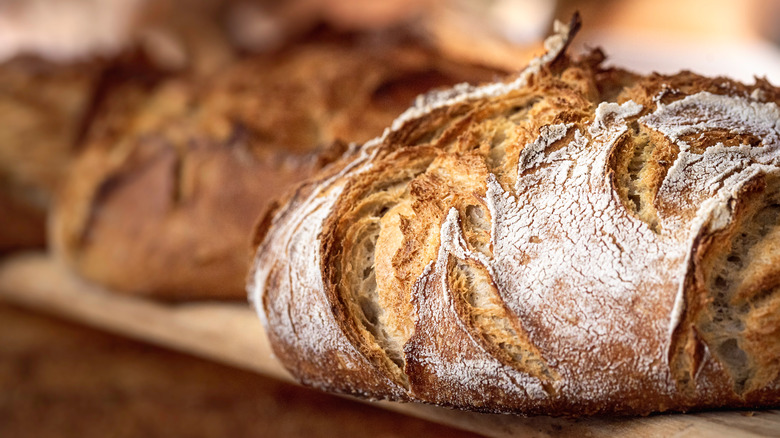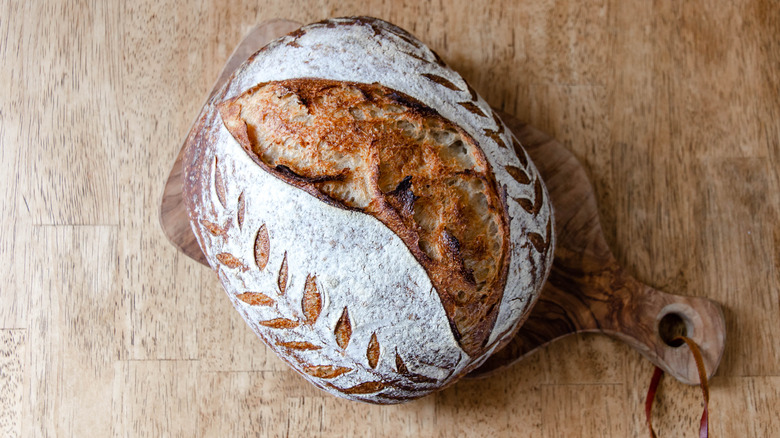The Bread Baking Rule You Should Never Break
Thanks to popular programs like "The Great British Baking Show," amateur bread bakers and Netflix subscribers alike may feel more confident than ever in their kitchen skills. The show's glossary of baking terms (like proofing bread and soggy bottoms) have seemingly become part of the common culinary lingo. Televised food shows aside, there are still some baking rules many bread lovers are unsure about, especially when it comes to proofing. A big question is if you should score before or after you proof — and according to Taste of Home, you absolutely should wait.
For those not familiar with what scoring means, it's essentially when you make cuts in the dough before baking as a means to control the bread from over expanding in the oven (think of the designs on beautifully decorated loaves if you're unfamiliar). This technique is especially helpful if the dough is under-proofed, as MasterClass shares a deep cut can help open up the bread as it bakes. Taste of Home explains that proofing bread is really just giving the dough time to rise, which is crucial to a good texture. Scoring, on the other hand, allows you to manipulate that texture for the right result.
Avoid explosions and score last
Some people falsely think that scoring should happen prior to bread's final proof, however, MasterClass points out that scoring is meant to prevent your bread from over expanding in the oven, not just create pretty designs. Unless you want the cuts you made to explode (which is what Taste of Home warns of) you should always score your loaf right before baking, after your final proof. The outlet explains this is because the dough will spill out of the cuts if they're made before you proof the dough. Scoring as the last step will prep your loaf for baking and can help fix any overproofing or shaping mishaps.
Now that you're ready to score your bread, Master Class recommends using a sharp tool (like kitchen scissors, a new razor blade, or a lame) and creating deep, decisive cuts. Consider what type of bread you're baking, so you choose the best score pattern for success. But most importantly, to save your intricately planned and laid out bread designs, remember to score last for the best outcome.

